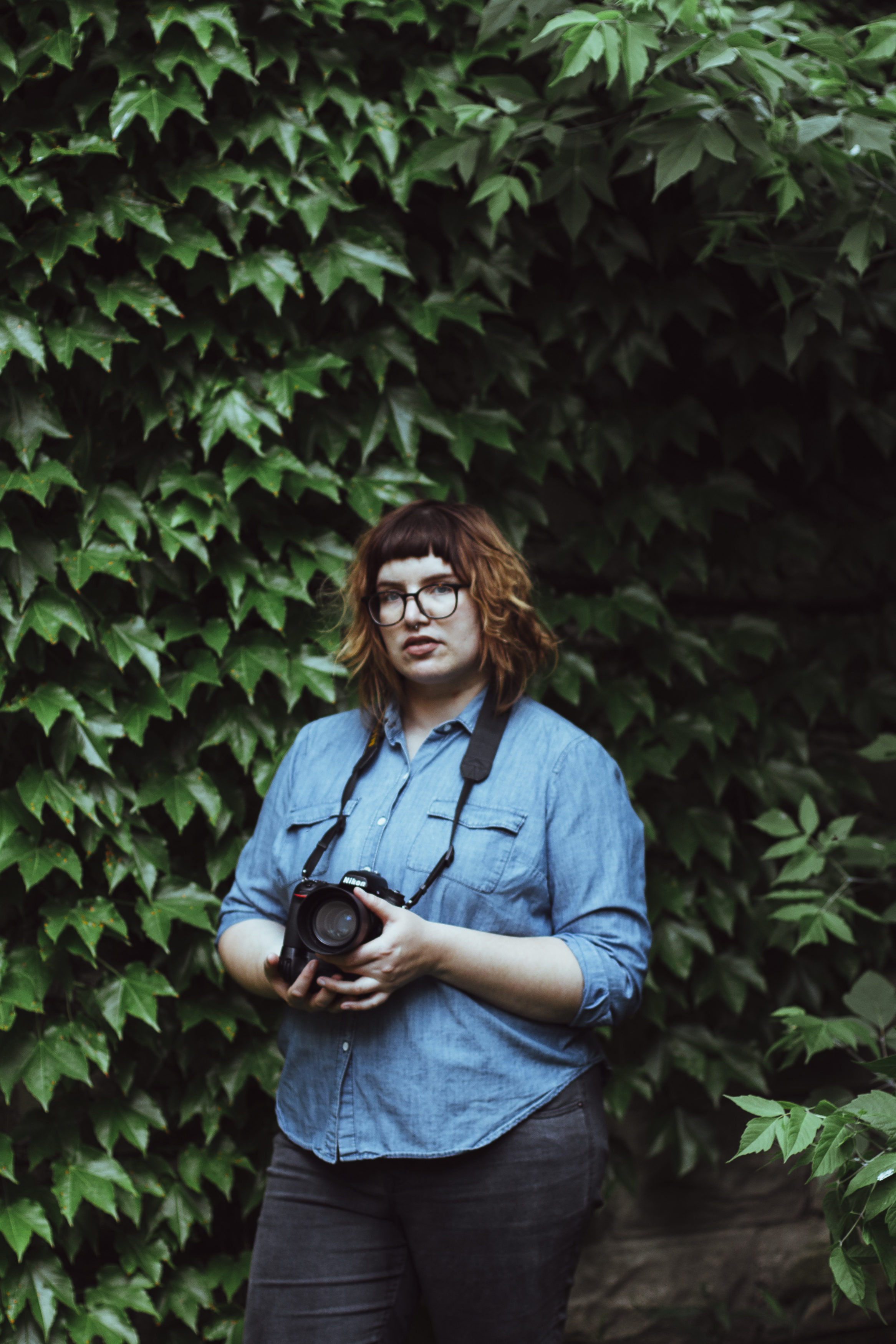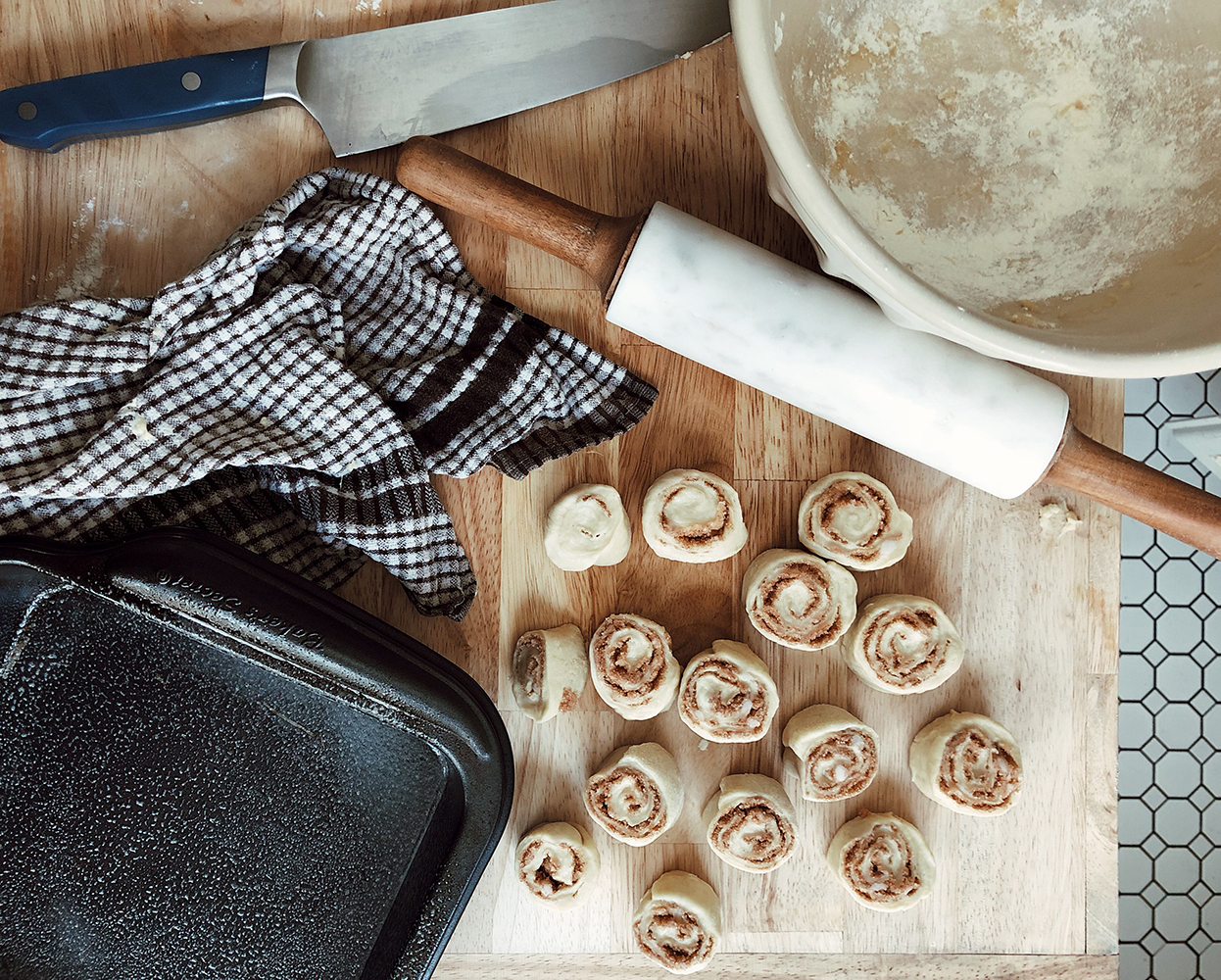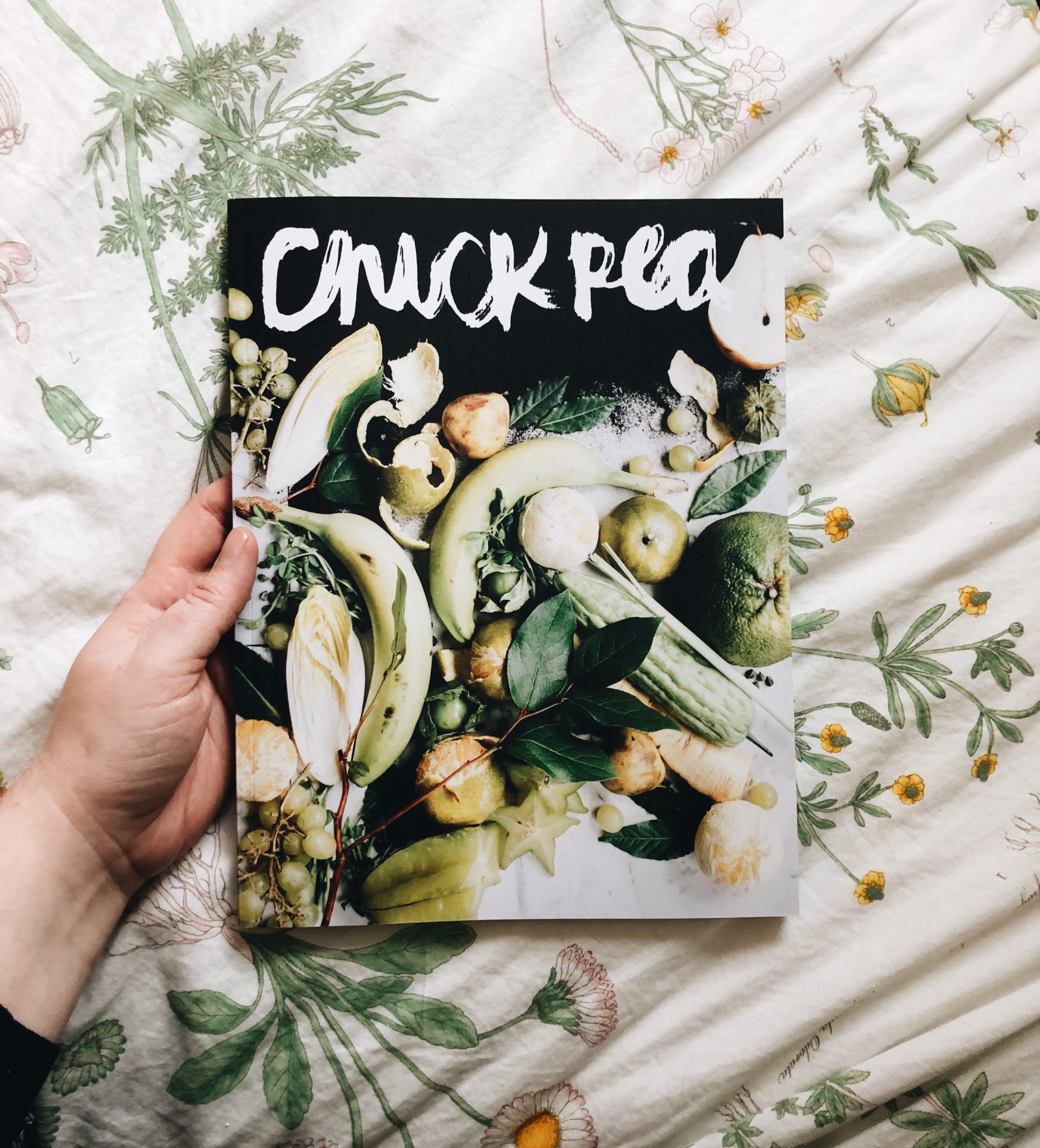In a world where finding a recipe is as easy as typing “vegan cheesecake” into a search bar, Cara Livermore has created something slow and intentional. Her quarterly digital and print publication, Chickpea Magazine, celebrates vegan home cooking with recipes and stories told through hand lettering and photography.
Livermore started the magazine, now on its 27th issue, with no publishing experience. She felt that the content she saw on the internet was lacking human touch, so she sought to create something with texture and heart. “My goal for the magazine is it to mimic a sketchbook, like I drew directly in it. It’s supposed to get you completely out of the internet and give you a place to rest,” she says.
I spoke to Livermore from her home and studio in Rochester, New York about building an independent magazine from the ground up, veganism, and the multimedia process of designing each issue.
Sixtysix: How did you first start Chickpea Magazine?
Livermore: My boyfriend and I used to have a blog on Tumblr called hipsterfood. After blogging for a year, we were getting a lot of followers and features, but I wasn’t really happy with the medium. Blogging felt too fast, too shallow, and impossible to make money from.
So we decided to collaborate with our readers to start a magazine. Because our original blog was on Tumblr, the community was baked in. We used to answer messages publicly about going vegan and what veganism is.
We posted about starting the magazine as a community effort and lots of people were up for it. This was before we started paying people, we definitely thought of it more as a group project than a “business.” People sent us complete submissions through our Tumblr inbox and we would message them back. We essentially do the same today, but with a Google Form.
We launched a Kickstarter and put up tiers for single issues, subscriptions, posters, and recipe cards. We really had no idea how to calculate costs or production fees, or how to scale our ideas. Kickstarter, Vegnews, and a few other large blogs featured us and we ended up raising over 800% of our original goal. But the process actually lost a lot of money because we had no idea shipping would cost so much, or that securing a printer at our originally quoted prices would be so difficult. And I had to hand-print all the posters and over 1,000 recipe cards myself. I think we’re still paying off those mistakes today!

Cara Livermore of Chickpea magazine. Courtesy of Chickpea magazine.
What was the most challenging part of getting the magazine off the ground and making the first few issues?
Money and sourcing were our biggest problems starting out. We went through more printers than we had issues, and we had no idea how to ship hundreds of issues without spending thousands of dollars out of pocket. Our first issue cost $19 just in materials per issue, and we sold them for $20 to $25—not a good idea.
At the time, the idea of a $20 magazine was still pretty new, and even a few years into it, we still couldn’t get stores to stock us because of the price. I also had no idea how to use InDesign so I made each page individually in Photoshop. There were many sleepless, tear-filled nights figuring that out! But we had a lot of energy to put into it, and we had the passion to follow through, so we made it work.

Walk me through the process of creating one of your hand-lettered pages.
After I do the first-pass edit on all the text, I lay it out in InDesign, including anything I plan on lettering, and format it all to match what I want it to look like in the end. I mark where I want to add lettering in red and keep that PDF on my tablet so I can easily reference it.
I draw almost all of my lettering on paper, then scan it in and fix it up in Photoshop. In the last few issues, I’ve been incorporating more digitally drawn lettering and illustration (via Procreate) but I still like the paper-drawn kind more.
I have a large collection of books with lettering styles that inspire me, and I go over them during breakfast on the weeks I’m working on design.

What does a typical workday look like for you?
I usually get right to cooking and shooting as soon as I’ve taken a shower and gotten dressed, around 10 a.m. I post on social media during lunch. Then, depending on what kind of work I have that day, I either keep cooking and shooting, or I’ll do some photo editing or website work until my boyfriend gets home from his day job.
We work together in the evening a few nights a week. He packs orders and communicates with stores, while I do text editing, lettering, administrative stuff, or kitchen cleaning. I normally end my workday between 8 and 9 p.m.
It’s core to what we do—that idea of action and compassion, living better and being thoughtful.
Where do you do all of your recipe testing and shooting? What does that process look like?
It’s all done in my kitchen and dining room. We bought our house with shooting in mind, so we have lots of big windows, and the dining room is the biggest room in the house. We are renovating the kitchen right now so it will work even better for what I need.
The process of recipe testing is just coming up with an idea for something that might taste good (usually inspired by past meals), cooking it while measuring throughout, and making adjustments batch by batch. I always have my laptop in the kitchen with Evernote open—it’s essential.
For shooting, I prepare the food the night before if possible, and set up the backgrounds and props on foam core so I can move them around. I shoot the dish as soon as I’m done cooking it. Shooting food definitely requires good project and time management.
How do you come up with a vision or aesthetic for a shoot?
I surround myself with as much visual inspiration as possible, so I can pull from it when I need it for an issue. I’ll go out to see a movie at the theater, go on a road trip, take long walks to our conservatory, or even just a new juice shop. Sometimes I look through my own book collection or books at the library, or give myself time to go down a wormhole online—like visiting dozens of Instagram accounts or spending a whole day on Pinterest. I seek out new information and make myself especially receptive to new ideas.
The look of a story first comes from the text itself, and then I try to build a world around the subject matter. For example, in our newest issue we had a piece about how Instagram is the new version of bringing the coolest lunchbox to the cafeteria, and how social media is affecting our ability to consume food authentically. So I wanted to photograph everyday food with as little styling as possible, and I shot it with my plastic Diana lenses to make it look unpolished.

Photos courtesy Chickpea magazine.
What is one of your favorite recipes you’ve developed recently?
One that I keep going back to is the brown sugar cookies from Issue 22. They’re almost entirely coconut oil and sugar, so you can imagine they’re quite good.
How central is the idea of veganism to the publication and why is that important to you?
It’s core to what we do—that idea of action and compassion, living better and being thoughtful. Whether you’re vegan or not, those values should resonate with you.
If you could give one piece of advice to someone thinking of becoming vegan what would it be?
Know your reason. Surround yourself with documentaries, podcasts, blogs, etc. that will help you understand why you’re doing it (I love the podcasts Live Planted and The Bearded Vegans). Write it all down so you can go back to it later. I know when I’m feeling disconnected from why I became vegan, I’ll go back to my own list and be like “Oh yeah! That’s really important to me, how could I have forgotten?” And it makes it a lot easier. The perspectives of environmentalism, animal rights, ethics, and health all play into how I see veganism.
Oh, and learn how to cook!



